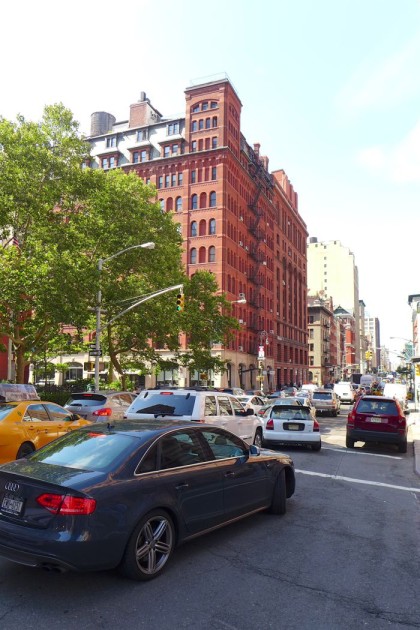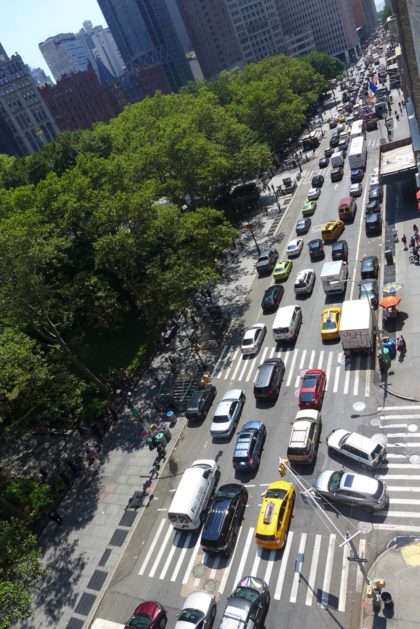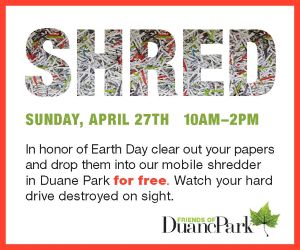Open Letter: Here’s Your Traffic Study
 In response to the recent Downtown Express article about how local politicians* “fired off a letter to the city’s top transit official calling for a comprehensive traffic study of Lower Manhattan’s medieval street grid,” James posted an epic comment that clearly warrants its own post. (*State senator Daniel Squadron, assemblymembers Yuh-Line Niou and Deborah Glick, councilmember Margaret Chin, congressman Jerrold Nadler, and borough president Gale Brewer.)
In response to the recent Downtown Express article about how local politicians* “fired off a letter to the city’s top transit official calling for a comprehensive traffic study of Lower Manhattan’s medieval street grid,” James posted an epic comment that clearly warrants its own post. (*State senator Daniel Squadron, assemblymembers Yuh-Line Niou and Deborah Glick, councilmember Margaret Chin, congressman Jerrold Nadler, and borough president Gale Brewer.)
Do these “Downtown pols” really need another study to find ways to improve traffic here?
“SECURITY” THEATER
••• After 9/11 to “protect” One Police Plaza, the City shut Park Row and access to many of the surrounding streets, rather than move Police Headquarters to a more defensible location. (Then again, after the first attack on the WTC in the 1990s, local politicians decided it would be smart to locate the Office of Emergency Management’s multimillion emergency command bunker on the 23rd floor of World Trade Center Building 7, a not unlikely future terrorist target.)
••• The City and State allowed security to prevent the unfettered reconnection of Greenwich and Fulton Streets to the street grid, effectively maintaining the disastrous WTC superblock.
SQUANDERED TRANSIT FUNDS
••• Politicians spent 4 billion dollars on a literal white elephant that could be about the least cost-effective way to improve transportation.
••• The rail tunnel to New Jersey that was cancelled for reasons of cost would have eliminated lots of cars and some buses (that clog city streets rather than stopping at the overburdened Port Authority terminal) coming into the City.
According to Streetsblog:
“In October 2012, the most recent month for which Hub Bound data is available, buses were 10.8 percent of all eastbound traffic in the Lincoln Tunnel, according to the Port Authority. But on an average weekday that month, buses carried 73.4 percent of all people traveling through the tunnel, according to the Hub Bound report. Put another way: Nearly three-quarters of people in the Lincoln Tunnel are traveling in about one-tenth of the vehicles.
“Or: Nearly 90 percent of vehicles clogging the tunnel are carrying slightly more than one-quarter of the people.
The bus numbers aren’t as lopsided for the Holland Tunnel, which has no dedicated bus lanes, but the efficiency of transit is still apparent: Buses are only 1.5 percent of the vehicles, yet manage to carry 26.5 percent of all people using the downtown crossing.”
THE POLITICAL WILL MEETS THE POLITICAL WON’T
Politicians continue to encourage the least efficient mode of transportation—the single-occupant car—in other ways.
••• Why do downtown politicians tolerate the use of Canal Street as an interstate freeway going from a bridge to a tunnel? One in five drivers entering the busiest parts of Manhattan are only passing through, on their way elsewhere. They are not the constituents of the downtown politicians, either.
••• Despite the availability of technology to collect tolls without tollbooths on the Verrazano Bridge and elsewhere, politicians continue to allow the cost-free use of Manhattan streets. Over half the car drivers commuting to Manhattan live elsewhere in the 5 boroughs, not in New Jersey or Long Island or Westchester or upstate. What do our downtown politicians think of that? (Apparently central London’s congestion charge raises hundreds of millions of dollars annually to improve public transit, reduced overall traffic 10%, reduced cars entering by one-third, and increasing bike ridership by 30%.)
••• On-street parking is either free at the vast majority of on-street spots or heavily subsidized at meters when compared to the price in lots and garages. That 50%+ share of all the drivers commuting into Manhattan have parking options subsidized by NYC both in Manhattan and where they park their cars at home. Cheap parking at home or at work means more cars.
••• The City and State continues to provide parking placards for over 100,000 government employees. Free parking means that workers in no NYC industry drive to work in greater proportion than government workers, many of whom work for agencies located in downtown Manhattan. Would you be surprised if 25% of the available street parking downtown were occupied by placard holders? With little fear of enforcement, those placard holders do not always park in a legal parking space, either, and that hinders traffic also.
••• There is essentially zero enforcement of laws against the fraudulent use of phony parking placards or “union-issued” parking placards. (Not to mention the absence of enforcement of laws against intersection blocking and double parking, which large companies can prepay at discounted rates.) Other cities control street parking by a system of parking permits available to local area residents only who register their cars in the neighborhood (and not at their second homes to obtain lower auto insurance rates).
••• Of the 31,000 vehicles in the NYC government fleet, only 8,000 are designated “critical,” i.e., Corrections buses, Street and parking meter repair, garbage collection trucks and sweepers, FDNY ambulances, ladders, and pumpers, etc. How many of those other 23,000 vehicles are “take-home” vehicles used for commuting by government employees?














amen. the parking placard abuse is out of control.
James for mayor! Or at least traffic commissioner.
Maybe it’s time to reconsider congestion pricing.
…and enforcing “No Honking” laws.
Very enlightening. Thank you.
…and get those super loud harley davidson motorcycles off the road.
What about the wasted time the police spend ticketing UPS trucks and every other delivery truck attempting to make deliveries? Where should they park trying to make deliveries? We pay the police salaries for ticketing and at the end of the year those tickets are not even paid! UPS and FedEx all negotiated with the city for a flat fee. Why do we have to pay police salaries for ticketing???
Re: Sharon- don’t know if you were trying to make a connection between trucks not being able to park in loading zones due to permitted vehicles being parked there, but I think that is an issue as well. Most of Tribeca used to zoned no parking 6-6 or so, so deliveries, as well as loading, could occur. Over time, as the neighborhood became more residential, most of those parking restrictions have changed to alternate side parking.
Perhaps each block should have a few sections reserved for time limited (30 minutes to 1 hour per vehicle) commercial loading and unloading during the day? And, require them to display a commercial permit, sold by NYC, which could also raise funds instead of the endless ticketing cycle?
The delivery people actually have a job they are trying to do and yes we tax payers get stuck with the bill for all the ticketing agents writing tickets to commercial vehicles. Whatever strides we made with bike lanes and CitiBike we have been challenged by Uber, etc. who pick up a lone person with enough space to drive a small team to where they are going.
Love this post/comment. James, are you plugged into any of the groups that organize for the good stuff and against the bad stuff you enumerated? LIke Riders Alliance, Transportation Alternatives, Move NY, others? They would benefit from your knowledge and passion, as I’m sure you would benefit from theirs.